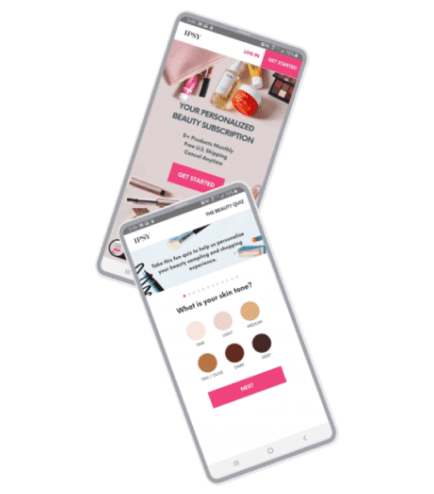Seven years ago, makeup subscription brand IPSY launched with the vision to democratize beauty. IPSY’s founders sought to celebrate individuality and diversity and to improve the accessibility of high-quality beauty products. After all, they believed makeup shouldn’t have to break the bank.
IPSY launched with a single flagship product: the Glam Bag. Delivered on a monthly basis, the Glam Bag included a templatized selection of beauty products, personalized to the customer’s preferences. Impressively, IPSY managed to sustain profitability as it scaled — since 2015, it has grown over 3X all while operating in the black.
Due to the nature of its offering, IPSY found that it was forced to compete against all beauty and subscription brands — not merely companies in the exact same space. IPSY’s Growth Team was up for the challenge. The UA division understood that traditional marketing channels had become crowded with competition. Yet, the company was facing more pressure than ever to scale its subscriber base. The writing was on the wall: It was time to explore new channels for subscriber acquisition.
5.37%
CTR for CPA
7.57%
CTR for CPE
7%
Quick cancel rate (app campaigns)
Saturated UA Channels Underdeliver
Over time, IPSY’s Growth Team had found that mobile web and desktop were inundated with marketing from beauty and lifestyle competitors. The wider market was also dealing with the issue of oversubscription. Most consumers are only comfortable managing a few monthly subscriptions, so the proliferation of subscription offerings made the vertical even more competitive.
“As a beauty subscription brand, IPSY competes with other beauty retailers and every other subscription box out there. To stand out, we needed to find a way to differentiate our offering upfront, and go where our competitors aren’t,” says Alessandra Sales, VP of Growth at IPSY.
To address this challenge, the Growth Team was eager to test mobile in-app ads, beyond social media. Rewarded mobile advertising, was seldom used by competitors, so this seemed like an advantageous solution. To keep the average cost-per-subscriber (CPS) within IPSY’s target range, they needed to find a scalable, performance ad solution to drive positive ROAS. The stakes were high: The team would need to meet its acquisition goals so that the company could avoid over-fulfillment and continue its growth streak.
“To compete with every other beauty retailer and subscription box out there, we needed to find a way to differentiate our offering upfront. And go where our competitors aren’t. Through our testing, we were able to validate our investment in the mobile in-app marketing experience.”
- Alessandra Sales, VP of Growth, IPSY


